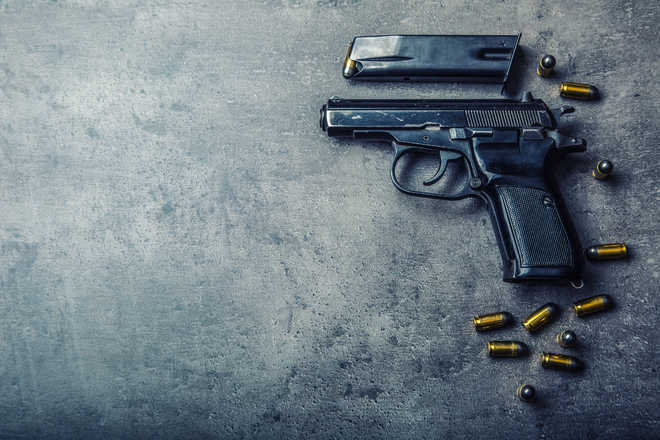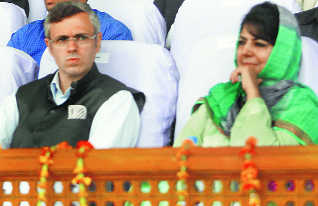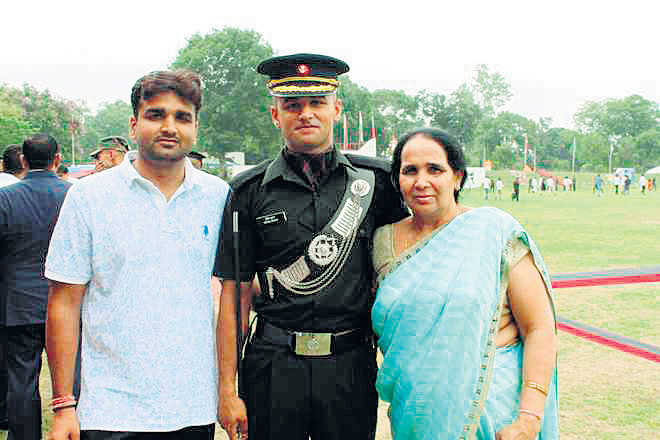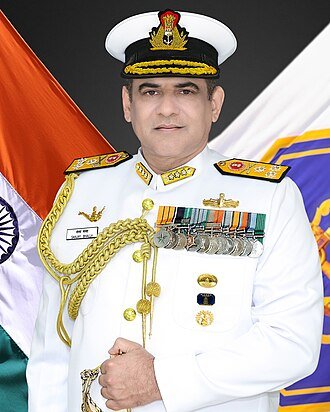A 5000 year old civilization with recorded history of ‘dark ages’, raids, plunders, colonisation, intrigues, complexities of castes and religions etc. was allayed and promised its rightful ‘tryst with destiny’, in the full know of the multiple wounds that had afflicted her past.
Yet, the founding fathers invoked her indomitable ‘spirit’ and ‘soul’ to assuage and rest her unnecessary ghosts, as it chose to deliberately invest only in the profundity of its past, and let the alternative narrative abound in its vivisected other-half, to carry the burden of narrow rigidities, prejudices and revisionist tendencies.
India reposed her faith in itself and inked her Constitution with secularism, liberality and tolerance that would be her sovereign calling-cards, while the bellicose neighbour went from the relative expanse of Jinnah’s Republic of Pakistan in 1947 to the ‘Islamic’ Republic of Pakistan by 1956 itself.
Befittingly at independence, it was the ‘Lion of Nowshera’ Brigadier Muhammad Usman (Maha Vir Chakra), who had earlier spurned offers to possibly become the Pakistani Military Chief by insisting on honouring his nation, India, to go down in the glorious annals of the Indian Army as the ‘highest ranking military commander’ to pay the ultimate price in the battlefield.
In the 1948 Indo-Pak war, Brigadier Muhammad Usman had fought gallantly and the Pakistanis had lost nearly 1000 men and when the end came, Brigadier Usman’s dying words were, “I am dying but let not the territory we were fighting for fall for the enemy”!
Today, confusing winds blow across India – one that seek to dig the wounds of the past and re-posit it in the face of widely settled history, sensitivities and most importantly, ‘closures’.
Nation-building in ancient lands is also a rapprochement process that insists on healing, moving-on and celebrating certain set of enduring facts and myths for progressive nationalism. But now the ‘national identity’ itself is sought to be reconstructed and stripped of its genealogically invested moorings, so ‘secularism’ is now openly derided as ‘pseudo-secularism’, and in the sacred land of wisdom, the profundity of thought is derisively called ‘pseudo-intellectualism’.
In the new India of 21st century, a revisionist agenda ensues with full vigour with the renaming of roads, monuments, airports, cities etc. to feed the basic instincts of ‘nomenclature-revenge’, without it solving the multitude of socio-economic scars and challenges that still beset the 70 year old nation.
A few years ago, lawmakers pandering to ‘correcting the mistakes made in our history’ renamed Aurangzeb Road as APJ Abdul Kalam Road – a naivety that barely concealed the inherent politics behind the move, in the same way Connaught Place was earlier replaced as Rajiv Chowk.
In the modern context and even before, both Aurangzeb and Prince Arthur (1st Duke of Connaught and Strathearn) were never national heroes, unlike in the case of APJ Abdul Kalam or Rajiv Gandhi, but to assume no political motive, gratification or import behind the name-change would be ingenuous.
In polarised times, ‘correction of history’ is an effective euphemism and powerful tool for targeting a section of society by implying a lot more than innocently professed. As an enthusiastic lawmaker said simplistically, “Whenever we remember Aurangzeb, we think about cruelty and torture. We do not want to be reminded of that”.
An unnecessary issue (because till then, no one was celebrating the Mughal Emperor Aurangzeb in its bigoted sense) was raked, when a large section of the country was still reeling under grinding poverty, discrimination and lack of opportunities – India, at such times is busy taking out the skeletons from its closets.
One institution that remained doggedly ‘inclusive’, proudly secular and meritocratic to a very large extent, such that it refuses to recognise race, region or religion to determine ‘its own’, has been the Armed Forces of India.
Comfortable in carrying the battle-honours won in the colonial times, proud of its traditions that date back to times of ‘States’ or pre-independence era and still confident of its loyalty to the nation nevertheless, has been the Indian Armed Forces.
The 250 year old St George’s Cross that cut across the Indian Navy’s ensign, flags and pendants were irrelevant to a Capt MN Mulla (Maha Vir Chakra) who chose to go down with his sinking ship in the 1971 Indo-Pak war – a soldier’s heart vests with his country solely, whatever be the accompanying name, sign or allusion to anyone’s political sensibilities.
A few days back, it took a 24 year Rifleman named, Aurangzeb, to disprove the futility of so many stereotypes that eat into our vitals. A soldier from the state of J&K itself, Aurangzeb needed no approval, disapproval or condescension to do what any soldier is expected to do, irrespective of his name, religion or region (like the other braveheart who succumbed that day, Rifleman Manvendra Singh in a fierce encounter in Bandipura).
Rifleman Aurangzeb from Poonch and Manvendra from Rudraprayag were far from the worthless urgencies and pettiness of Lutyen’s Delhi that sometimes immerses itself in the most unwanted passions under the guise of misplaced nationalism. This Aurangzeb’s father too had served the nation in the Army, one of his brothers is already undertaking Military training, while yet another 15 year old brother chips in, “I will join Army like my brothers and father”!
Inherent steel, pride and josh of a proud Indian soldier and father echoes in Aurangzeb’s father’s words, “I give PM Modi 72 hours to avenge my son’s death or else we are ready to take revenge on our own. Kashmir is ours. We must not let Kashmir burn”.
The Aurangzeb from the Indian Army needed no ‘correction of history’, he was busy making history for his paltan, his fauj and above all, his country. Both the tyrant from the history and the noblest son of this land were called Aurangzeb – both are equally true and yet we need to overcome the unnecessary urge to over-specify, pin-point and needlessly perpetuate a narrative of hatred, bigotry and fear.
Every caste, region and religion in India has given both heroes and villains – India needs to be comfortable with the same without assuming supremacist positions that vilify ‘one’ and glorifies the ‘other’ as India must no go backward but forward, as explained in the context of the wheel in the Indian flag by the erudite-philosopher and former President, S Radhakrishnan, “the wheel denotes motion.
There is death in stagnation. There is life in movement. India should no more resist change, it must move and go forward. The wheel represents the dynamism of a peaceful change”










 AFP
AFP
























































